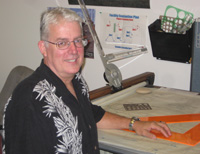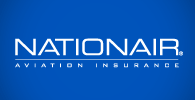Alan Wright ensures replacement parts


Need a part for your Twin Commander? No problem. Your authorized service center likely will have it in on the shelf. If not, the service center calls Twin Commander Aircraft LLC in Creedmoor, North Carolina, to order it from master stock. The part may be on its way to your airplane later that day. Sounds simple enough, but the fact is it takes a lot of behind-the-scenes effort to make sure that part is readily available and, just as important, fairly priced.
Supplying replacement parts for the worldwide fleet of piston and turboprop Twin Commanders is a principal business of Twin Commander Aircraft, and Alan Wright is among the group of people at the factory who makes sure that business gets done.
As Twin Commander Aircraft's design engineer, Wright is responsible for updating original drawings on all models, and producing drawings for new parts and components. He also does three-dimensional Computer-Aided Design models of new parts and components and, when required, builds and uses special fixtures to test longevity and failure modes for new parts.
For example, he recently designed a new-style control cable seal nut that fits on the end of cables connecting power and condition levers to corresponding controls on the engines. Wright then designed and built several fixtures to test prototype versions of the part until the design was fixed.
�When the cables originally were made, the company supplied functional seal nuts with the cables,� Wright explained, �but for some reason they stopped supplying them.� With no new replacement seal nuts available for the engine control cables, technicians began using a nylon nut that was attached to the cable ends for shipping.
Unfortunately, those nuts did not do as good a job of sealing the cable ends as the original seal nuts, and pressurized air from the cabin seeped into the control cable sheaths. Along with the slight loss of pressurization that occurred, the moisture-laden cabin air accelerated wear inside the cable sheathing and could even crystallize at altitude, freezing the engine controls in place until the airplane descended to a lower and warmer altitude.
Twin Commander wanted a better seal nut, and sought bids from vendors to produce one. However, partly because of the small production quantities involved, the price quoted was exorbitant. The solution: develop a better design that could be produced and sold at a lower cost. For Wright it was a soup-to-nuts project�design the part, design the fixtures to test it, and then conduct the testing.
The in-house effort yielded a control cable seat nut that is comprised of a rubber seal sandwiched between two aluminum halves bonded together. Starting with a two-piece nut improved the manufacturing process compared to the original one-piece part. �It's easier to get the seal inside the nut when you have two pieces,� Wright explained. �It's also less expensive to manufacture.�
High price and/or limited or no availability of a vendor-supplied part often are the drivers for designing replacements, Wright said. Another recent example is the nose gear steering cylinder. When the vendor-supplied component became unavailable, Twin Commander reversed-engineered the part, then built and operated a test fixture for the newly designed steering cylinder.
The bottom line on that and similar efforts by Wright and others at Twin Commander who are focused on parts issues: if you call your authorized service center looking for engine control cables, a nose gear steering cylinder, or any number of other parts or components, it's likely to be right there on the shelf, ready to install, at a price that won't break the bank.
Discuss this article in the forums...








